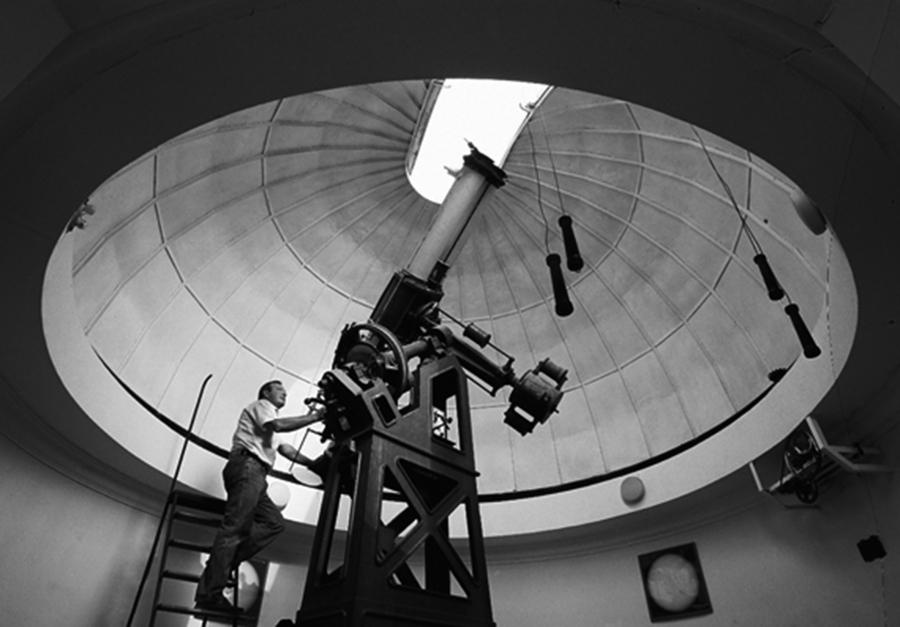Evolución Temporal, Caracterización y Asimetría Norte-Sur de la Actividad Solar mediante Registros del Observatorio del Ebro sobre Grupos de Manchas y Playas Solares durante 1910-1937

The heliophysics catalogues published annually by the Ebro Observatory in the period 1910—1937 (both inclusive) have recently been digitized by using optical character recognition technology in order to analyze the data computationally. This has made it possible to study simultaneously some aspects of solar activity in terms of two different solar structures located in two different layers of the solar atmosphere: the sunspot groups (Photosphere) and the solar plage groups (Chromosphere).
The PhD Thesis is made up of three main topics. The first one is the evolution over time of the occurrence daily rate (TOD) and the distribution in percentage of the sunspot and solar plage groups classified according to the different morphological classes, and also according to four intervals of areas. For each solar structure, it has been analyzed the evolution over time of the north-south (N-S) asymmetry derived from the total annual number of daily occurrences of each morphology and area interval. In the period under study, it has been observed that the most frequent sunspot and solar plage groups are the smallest ones. Likewise, the solar activity in terms of the total number of daily occurrences appears to be, on average, 23% higher in the Chromosphere. Regarding the N-S asymmetry, it has been observed that the northern solar hemisphere is dominant over the southern solar hemisphere for longer periods of time, and also shows higher levels of asymmetry. Moreover, the temporal evolution of the normalized north-south asymmetry index (NNSAI) derived from the total number of daily occurrences is not exactly the same in both structures, since solar plage groups present lower index values throughout the entire period. However, the NNSAI associated with each solar structure follows approximately the same behavior regardless of the morphological class, although they show a subtle dependence on the area, since the largest groups present higher N-S asymmetry.
The second topic of the Thesis deals with the morphological evolution of sunspot and solar plage groups throughout their lives by using a first-order Markov chain model. This model allows to estimate and make predictions of several properties of these solar structures, such as the probability of remaining or changing their morphology during two consecutive observations, the expectation of evolving towards a certain morphological class at some point in their lives, the time that they remain in each morphological class to which they evolve throughout their lives, the percentage of groups that die or end up on the far side of the Sun, and the TOD associated with each morphological class. The results of the model have been complemented with distribution in percentage of the different morphological classes that both solar structures groups present at birth and at death. Finally, the temporal and spatial homogeneity of the data is studied, concluding that both solar structures evolve in a similar way in both solar hemispheres, but they present small deviations in all properties depending on the solar cycle or phase of the solar cycle considered, affecting some aspects of its morphological evolution.
The third and last topic of the Thesis focuses on the cyclic behavior detected in the N-S asymmetry of the monthly sum of areas and daily occurrences of sunspot and solar plage groups recorded at the Ebro Observatory. Analyzing the temporal evolution of the absolute and normalized N-S asymmetry indices during 1910—1937, a cyclic behavior in which the dominant solar hemisphere changes systematically with a global period of 7.9±0.2 yr. has been discovered. In order to accurately verify and quantify this periodicity, and study its prevalence over time, the RGO-USAF/NOAA sunspot group series (1874—2016) has been used. Subsequently, each time series of the absolute asymmetry index has been examined by using different techniques such as power spectrum analysis, the CEEMDAN method (Complete Ensemble Empirical Mode Decomposition With Adaptive Noise) or the Morlet wavelet transform. The combined results reveals that the N-S asymmetry presents a cyclic behavior on different time scales, consisting in two quite stable periodicities of 1.47±0.02 yr. and 3.83±0.06 yr., which co-exist with another three discontinuous components with more marked time-varying periods of 5.4±0.2 yr., 9.0±0.2 yr., and 12.7±0.3 yr. Moreover, during 1910—1937, only two periodic signals of 4.10±0.04 yr. and 7.57±0.03 yr. can be clearly observed. Finally, both signals present slightly longer periods in the N-S asymmetry associated with solar plage groups compared to that associated with sunspot groups.
Keywords: Solar Activity, Markov Chains, Morphological Evolution, N-S Asymmetry, Periodicities in Solar Activity Sunspots, Solar Plages.